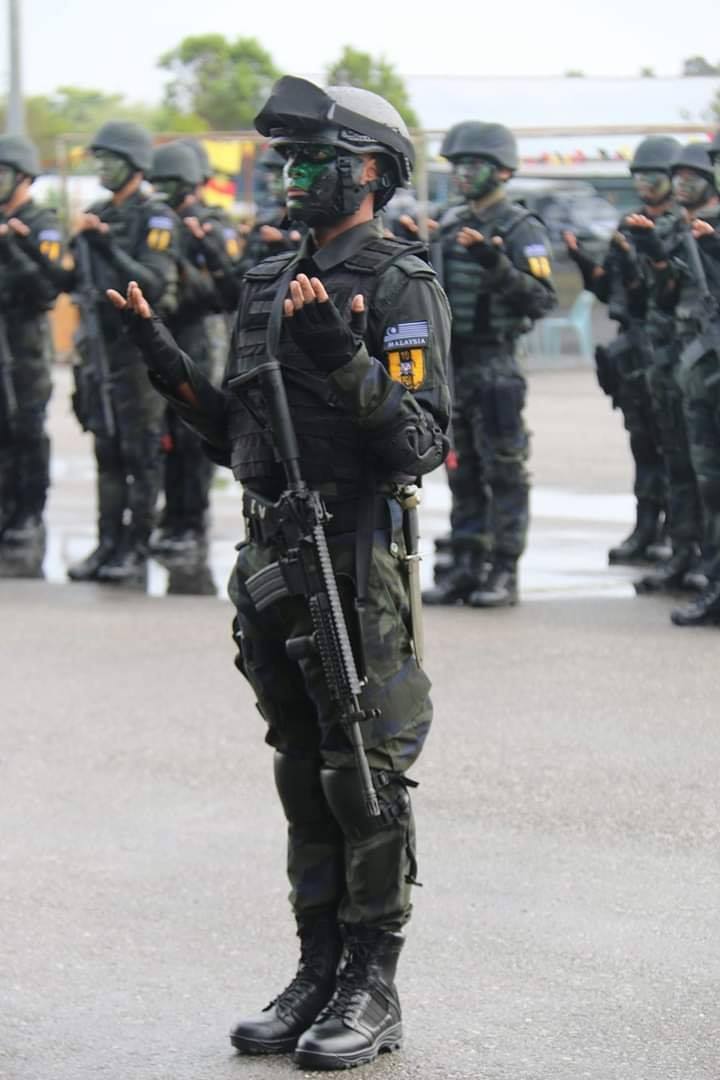
SHAH ALAM: The police wants new bullet proot vests and night vision gear for the General Operations Force and the marine police. Bukit Aman Public Order and Internal Security Department director DS Abdul Rahim Jaafar said the new vests will replace the current ones which is already 10 years old.
From Bernama.
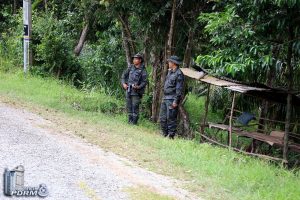
Its director, Datuk Seri Abdul Rahim Jaafar said presently, there were about 12,000 members of the General Operations Force (GOF) and Marine Police Force (MPF) in need of the vest.
He said this was because they were not only involved in various operations such as ‘Op Benteng’ but also the highly risky monitoring of the country’s borders.
“We will discuss with the government to obtain the allocation. By the end of this month, we will get the cost for the bulletproof vests.
“The discussions and application for allocation will also include other equipment such as night-vision binoculars and several vehicles for conducting anti-crime operations,” he said at a news conference after visiting the 5th Battalion, GOF Officers’ Mess in Simpang Renggam, here, today.
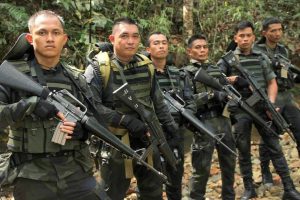
The search for the new gear has been in the forefront following the shooting incident at the Malaysian-Thailand border in Perlis which saw two GOF personnel shot by smugglers. One of the GOF personnel, Sarjan Baharuddin Ramli was killed in the November 24 incident.
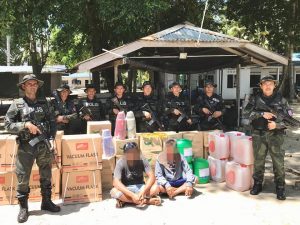
The police had also recently noted the lack of armour vehicles especially in Sabah and they were hoping to get a number of them soon. It is unclear when this will took place however.
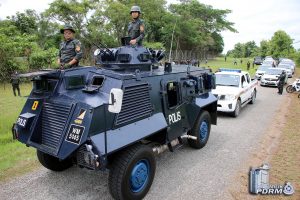
The police also appears not to have taken advantage by the urgent operational requirement (UOR) for new gear and equipment afforded by National Task Force for Op Benteng unlike the military. FIC, RHIBs and etcMore RHIBs for the Navy
— Malaysian Defence
If you like this post, buy me an espresso. Paypal Payment

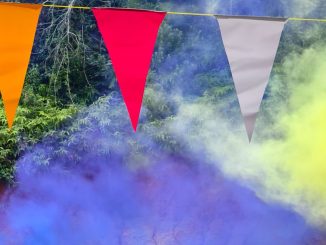
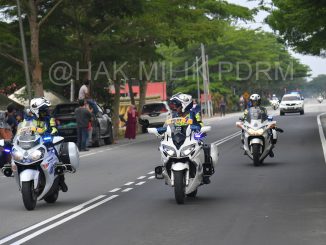

buying them is one thing.
do you know how uncomfortable wearing heavy armor in high humidity climate like ours?
most personnel will prefer not to use those ballistic panel inserts in their plate carrier, or to skip wearing plate carrier altogether due to the high discomfort while wearing them.
these basic things is what we need to research, not missiles and whatnot.
http://www.armytimes.com/news/your-army/2019/06/26/tired-of-sweating-in-your-acus-try-these-new-hot-weather-cammies/
We already has made in malaysia body armor used by Australian army
Btw there’s no one size fits all, be all end all kinda body armor that fits to all type of police personnel. GOF likely needs a body armor molle loops while city cops might want a hybrid anti stab design. Our ninja/UTK unit might be the only units needing level IV body armor with level V ceramic plate
Reply
Actually its the GOF that need the Level 4 plates as they are more likely to encounter rifle armed goons especially in Sabah.
The vest itself can be made locally right? So what they would need to import is only the ballistic plates. This can help to lower prices hence equipping more personnel with BPV. Also if they could bulk buy with TDM that would save on cost too.
Reply
Yes they are/were made locally. One company cannot remember Rhino or something like that that was owned by a British guy even used to export for use in Iraq and Afghanistan. I believed the company was later sold to Malaysian owners which didn’t achieved the same success. Not sure whether its still operating or not. Usahawan PSE got a contract for some 100,000 vests for the Army either in 2019 or 2018. The company also got the deal to supply FAST helmets to the Army in 2017. It used to supply the uniforms to the military before being superseded by Jakel in 2016.
Very uncomfortable. Just as it is in places in the Middle East, Central Asia and Africa.
On top of body armour helmets and belt orders are being worn. It’s not only the humidity and the need to carry other things but also the fact that those wearing them have to for hours on end and conduct foot patrols.
Until there is an alternative or R&D actually enables body armour to be more comfortable or bearable; troops will wear them knowing it might make a major difference. They will also have no choice as standing orders in place will leave them no choice.
I have no idea and I will not speculate but was the chap who was killed wearing body armour? Under the circumstances in which he was shot: would body armour have saved him? If he wasn’t wearing any: the government is responsible for placing him in a situation where he faced danger but was not equipped with what he should have been.
As it stands; stuff like body armour, optics and NVGs are no longer something one should have but which can be put off until funds are there. It’s the bare basics and it is mostly still lacking.
In 2013, the bulk of troops deployed to the Kampung Tanduo area did not have body armour despite being in the receiving end of hostile fire. 7 years later we still have not made much progress in this area.
Repl
Both were not wearing any body armour. The reason for it was that they were on conducting a reconnaissance mission.
singapore new load bearing vests (LBV)
https://www.mindef.gov.sg/web/wcm/connect/pioneer/ccb74666-6712-410a-b702-96856777d9d4/CESP1.jpg?MOD=AJPERES&CACHEID=ROOTWORKSPACE.Z18_1QK41482LG0G10Q8NM8IUA1051-ccb74666-6712-410a-b702-96856777d9d4-mfJFHp9
http://1.bp.blogspot.com/-nrGZoRUhwCs/X8o3mkyDO9I/AAAAAAAASjY/ppNIT09H1vI7khajAVjjgn25pXlw6S7RwCLcBGAsYHQ/s1920/Singapore%2BArmy%2Bsoldier%2Bequipments-1.jpg
The effort of this new LBV is to reduce the weight placed on the shoulders. which is why many heavy items moved to the hip area.
Still the main issue is the uncomfortable feeling something that is heavy sticking to your body. That disturbs the natural perspiration evaporating and cooling your body. If someone can design a LBV that can ” float ” and not touch the wearer’s body, or at least would significantly reduce the touching area compared to current LBV, that would greatly enhance the comfort level of the wearer.
1. Quality- Anyone remember this?
https://www.malaysiandefence.com/defective-combat-equipment-and-the-auditor-general-report/
2. I saw locally made hard plates at an open house a long time ago. The manufacturer was Sri Jentayu Global.
3. Comfort- one reason plate carriers that do away with soft plates are gaining popularity at the expense of more comprehensive vests.
Singapore has just introduced a new load carrying/armour system that has reduced coverage relative to the previous ILBV that used soft plates from a German company (I never got to see the hard plates.) There is no more soft plate coverage of the neck, shoulders and upper chest, but there is still torso side coverage. The new system was 3+ years in development. They’ve introduced a smaller helmet too. What I find funny is they have separate versions for “combat” and combat support troops- to me the distinction is often academic. Troops do get pressed into other roles and contact with the enemy does not distinguish.
Reply
Yes, Sri Jentayu Global.
I think the difference in combat and combat support are the locations where the soldiers are stationed at low threat levels. For example when doing guard duty inside the camp. There is no need to be fully up armoured for such duties. It will also give commanders firm orders on allowing such exceptions. I have seen Singapore soldiers on guard duty inside the camp fully equipped with body armour. At the main gate its elementary but inside the third gate is simply excessive.
Quite surprising that PDRM didn’t take advantage of UOR considering every Tom, Dick & Harry civil services are making this excuse to add more stuff. Or perhaps maybe that extra allocation went to all that thousands of new Civics & X70s.
@ AM
The difference between the combat and support is that the combat version is lighter (you can see the extensive lightening holes) and more expensive to produce.
Marhalim “I think the difference in combat and combat support are the locations where the soldiers are stationed at low threat levels.”
All troops will use the same belt and harness component, which is intended to put the weight on the hips.
The vest component for combat arms is known as “enhanced.” The one for combat support and CSS arms is known as “standard.” Both provide the same level of coverage and protection apparently.
The only difference is that the enhanced vest has a MOLLE lattice for additional pouches and the armour component is removable. So it can be worn just to carry gear or additionally for protection.
The standard version has non-removable armour and very limited attachment points. So it is only worn when ballistic protection is desired. Otherwise the soldiers will do without it entirely.
“I have seen Singapore soldiers on guard duty inside the camp fully equipped with body armour. ”
Those would be the current ILBV system. All soldiers are issued with it as a means of attaching pouches, but only combat arms troops have hard and soft plates inside.
ILBV appeared around 2010 and has much more coverage than the new system. It even has optional neck (issued to combat arms) and groin (rarely issued) protection. The German company was Mehler.
… “If someone can design a LBV that can ” float ” and not touch the wearer’s body,”
The new SAF vest has a yoke feature that provides some spacing on the back. There are also moisture wicking combat shirts around.
AM – “ to me the distinction is often academic”
Maybe but to me it depends. What type of “support troops” (some have a higher likelihood of being exposed to fire – direct and indirect) and what type of kit? If it’s weapons; certain types of non combat troops: would find it useful to have a shorter barrel weapon; i.e. the PN90 and Sterling which in the past when to vehicle crews and such.
As for personal protection; as long as there’s a possibility of coming under fire; there should be no distinction between protection levels for combat and non combat troops.
@AM
Carbines and machine pistols and even revolvers started out as support troop equipment, but some became good enough to replace the frontline equipment, so quality isn’t necessarily compromised. The cost savings however can be significant, when you think about it… couple hundred dollars per pax multiplied by how many tens of thousands of kits to be acquired
Azlan “As it stands; stuff like body armour, optics and NVGs are no longer something one should have but which can be put off until funds are there. It’s the bare basics and it is mostly still lacking. ”
Unfortunately, even the little armour that we have is not great. Designs are old (heavy, cumbersome, less protective.) Often it does not even come in the right colour or have the proper pouches. Given the age and scarcity, it is doubtful that the helmets and plates have not expired.
Look at SG,they pave their own way in making the load carrier to suit the men but ATM on the other hand just swallow whatever the “mat salleh”use and carry.
Like i said in the previous post,get rid of STRIDE,let ATMA,or University students who are in PRODUCT ENGINEERING or RRODUCT DESIGN be creative design something for ATM be it personal items etc etc…dont stick to old school ideas and thinking…..my take
@AM
Nowadays even smugglers and sea pirates have access to full auto AK47s, so shouldn’t our border security be equipped to frontline battlefield levels?
redsot “Look at SG,they pave their own way in making the load carrier to suit the men but ATM on the other hand just swallow whatever the “mat salleh”use and carry.”
Do you read anything that we write here? Marhalim and I just mentioned the local company that produces our armour and plates.
Now that you’ve mentioned it, Stride is involved in ballistic testing and developing our armour. They do exhibit test articles at their booths at army open days.
joe “Nowadays even smugglers and sea pirates have access to full auto AK47s, so shouldn’t our border security be equipped to frontline battlefield levels?”
I never said otherwise.
Chua “so quality isn’t necessarily compromised. ”
Azlan “What type of “support troops” (some have a higher likelihood of being exposed to fire – direct and indirect) and what type of kit?”
I acknowledge that you both have a point. In this case protection levels are the same for both versions but the one for “support troops” lacks attachment points for pouches.
As you said, gear evolves into forms and functions that weren’t envisioned at the outset. I would think that just because the planners feel that support troops don’t have a use for the storage, doesn’t mean the users won’t find one or that operational experience won’t show the point of one. To lock out the possibility for the sake of some savings in production (in this case very slight) isn’t prudent.
“Support troops” aren’t safe from contact behind the lines and insulated from dismounted firefights. That without being pressed into roles for which the intended type of troops are not available.
The PDRM GOF needs not just better bullet proof vest n night vision system. They need basic basic sandbags. If you look at the two poor guys standing in front of the makeshift pondoks that provides shelter from the blazing sun n pouring rain thats bad.
Properly purpose built post should be built at regular point from which mobile patrols can set out on patrolling duties must be set up. These post should be build with sandbags up to a certain height n with a proper roof overhead. Better still if the roof can be made to withstand grenade blast too.
Thats a first step.
As for night vision equipment thats a no brainer. Both monocular or twin vision equipment attacheable to existing helmets should be issued to all night duty Police. Others can be issued to those that requires them.
As for bullet proof vests, thats more debatable. Patroling the jungle is no easy task . But depending on the mission it may be impossible to wear the heavy vest. Its a trade off. Its mobility vs protection. On long patrols in the deep or secondary jungles it may be too heavy to our troops.
But for border protection where patrolling is done on vehicles I am 150% for wearing the full protection vests.
It is time we should give the issue of bullet proof vest real research n the PDRM must make specifications properly.
The two GOF personnels that got shot were not wearing any vest nor were they armed with rifles because they were on Recce in plain clothes. So wearing bullet proof vest would give away them being police.
The solution would be to either do the recce in uniform n neing properly armed or increase the personnel from 2 to say 4 persons n carry more magazines like day 6 magazines per person n another say 100 rounds in waist pouches
Agreed with the comment above,border security personnel should not be in “pondok” where kids play masak masak.Ever heard of pre-fabricate buildings or 3-D printing of buildings.im sure STRIDE have heard of it,and is busy building n designing simple pre-fab concrete guard house for the border security guys.And im sure they are testing a 3D printing of building wirh strong materials.These are simple projects that cost only thousands Rm not millions.Pre-fab is the in thing to make as many and as fast border security post all along mal-thai….mal-indon border.
As ammo distribution why waste money issuing 300++ rounds to each personnel….ever heard of thunder-flash it makes loud noise that even the dead will wake up from their grave.croc will fled when personnel throw it in the river before river crossing.
If the opposition is overwelming dont forget to smoke out the area for retreat.this will ensure you will not carry ur buddy in bodybag.4 in a SQUAD patrolling is fine….too many will exhaust the man power….